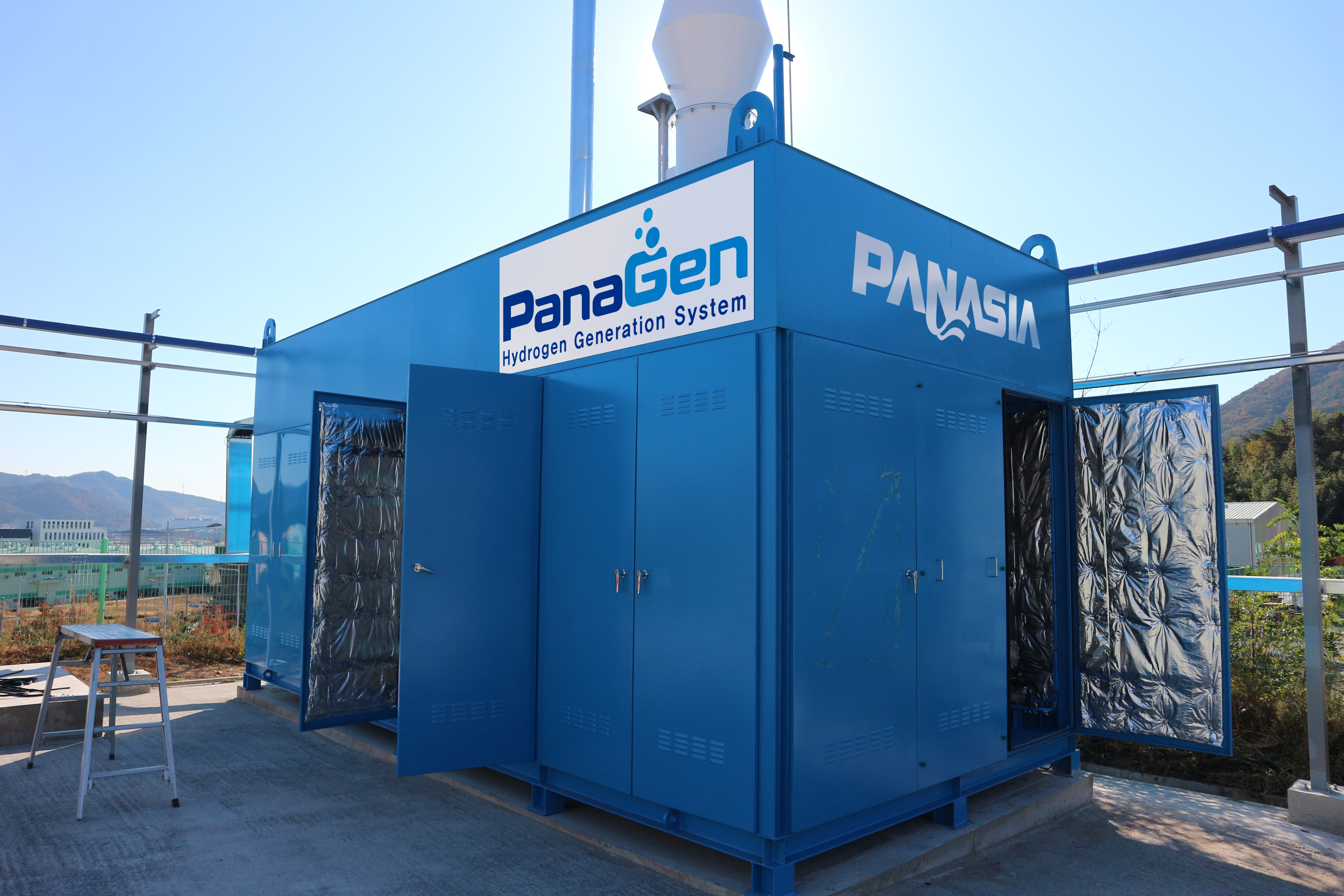
- This is PANASIA
- Business locations
- ESG Management
- History
- Smart PANASIA
 About
About
Check PANASIA introduction,
ESG management, and History
information
- Energy Solutions
- Air Solutions
- Water Solutions
 Eco-friendly Solution
Eco-friendly Solution
About Global environmental
regulation, Hydrogen business,
Air quality, and Water quality
environment solutions
- Product Service
- Service Network
- Customer Service
 Customer Support
Customer Support
Check the Panasia’s
after service
- About
- Eco-friendly Solution
- Customer Support
- Media
NEWS
Panasia, develop a Hydrogen Reformer called ‘PanaGen’
First delivery to Daejeon hydrogen station in 2022
Ensuring safety by AI control system..."contribute to improve the promotion of ecosystem"
Panasia, an eco-friendly company, is going to enter the energy company. Panasia aims to lead the hydrogen industry with its Hydrogen Reformer "PanaGen" that can generate hydrogen, which is the energy source for the next-generation.
In 1989, Panasia began as a manufacturing company for measurement control system for ships. In the '90s, Panasia expanded its business to include environmental equipment for ships. Soo-tae Lee, CEO of Panasia, has a management philosophy to challenge new businesses boldly with constant innovation and technology.
Panasia has secured original technologies such as BWTS and SCRUBBER according to IMO's environmental regulations. As a result, sales have grown significantly. Last year, Panasia's consolidated-base sales and operating profit amounted to 328.5 billion won and 71.5 billion won, respectively.
 ▲ Hydrogen Reformer developed by Panasia.
▲ Hydrogen Reformer developed by Panasia.
Panasia keeps developing business areas and entered the hydrogen industry.
This is because hydrogen is likely to draw attention as a future energy. So, Panasia is focusing on developing Hydrogen Reformer. A Hydrogen Reformer is a product that produces hydrogen through the reforming of natural gas.
In fact, the level of SMR(Steam Methane Reforming) technology in Korea is lower than other countries. It is difficult to receive investment because the market is focused on small and medium-sized enterprises. Panasia began developing Hydrogen Reformer early on. Currently, the Korea Institute of Energy Research is verifying the products. PanaGen will be supplied to hydrogen stations in Daejeon for the first time in 2022.
Prospects for Hydrogen Reformer are bright due to increased demand for hydrogen stations. The government plans to build a total of 310 hydrogen stations in major cities, highways and transit centers by 2022. It will then expand 660 by 2030 and 1,200 by 2040. If so, there will be installed each hydrogen station per 50 km on the highway in 2040.
 ▲ Hydrogen Reformer schematic diagram
▲ Hydrogen Reformer schematic diagram
Furthermore, Panasia aims to increase the completeness of its core processes for miniaturization and lightening of Hydrogen Reformer. Panasia official said "If hydrogen is produced at a low cost through technological advancement, consumers will be able to use hydrogen fuel cheaply,"
The Hydrogen Reformer business is likely to expand for vessels in the future. Along with tightened maritime regulations, ship fuel will be converted to eco-friendly. The ship market has barriers to entry, but Panasia has a 30-year reputation in this field. Thus, Panasia has sufficient potential to enter hydrogen ship market. Panasia operates 3 overseas subsidiaries and 47 global service networks.
Of course, there are tasks that need to be solved. It should address residents' safety concerns about hydrogen. Panasia has developed an AI control system (that is) equipped with surveillance and accident prevention function to secure safety. The test drive is in progress.
In addition, the government plans to strengthen laws and standards for safety. And also, it plans to set up an agency dedicated to hydrogen safety management. It will actively promote hydrogen safety and safety management methods to nearby residents and the public. It will also activate hands-on events such as test-drive of FCEV (hydrogen vehicle) and demonstration of hydrogen stations.
A company official said, "Hydrogen has been recognized for its safety worldwide. We will thoroughly verify the technology to address concerns among residents." He added "We will contribute to revitalization the industrial ecosystem by developing technology to the level of technologically advanced countries."










